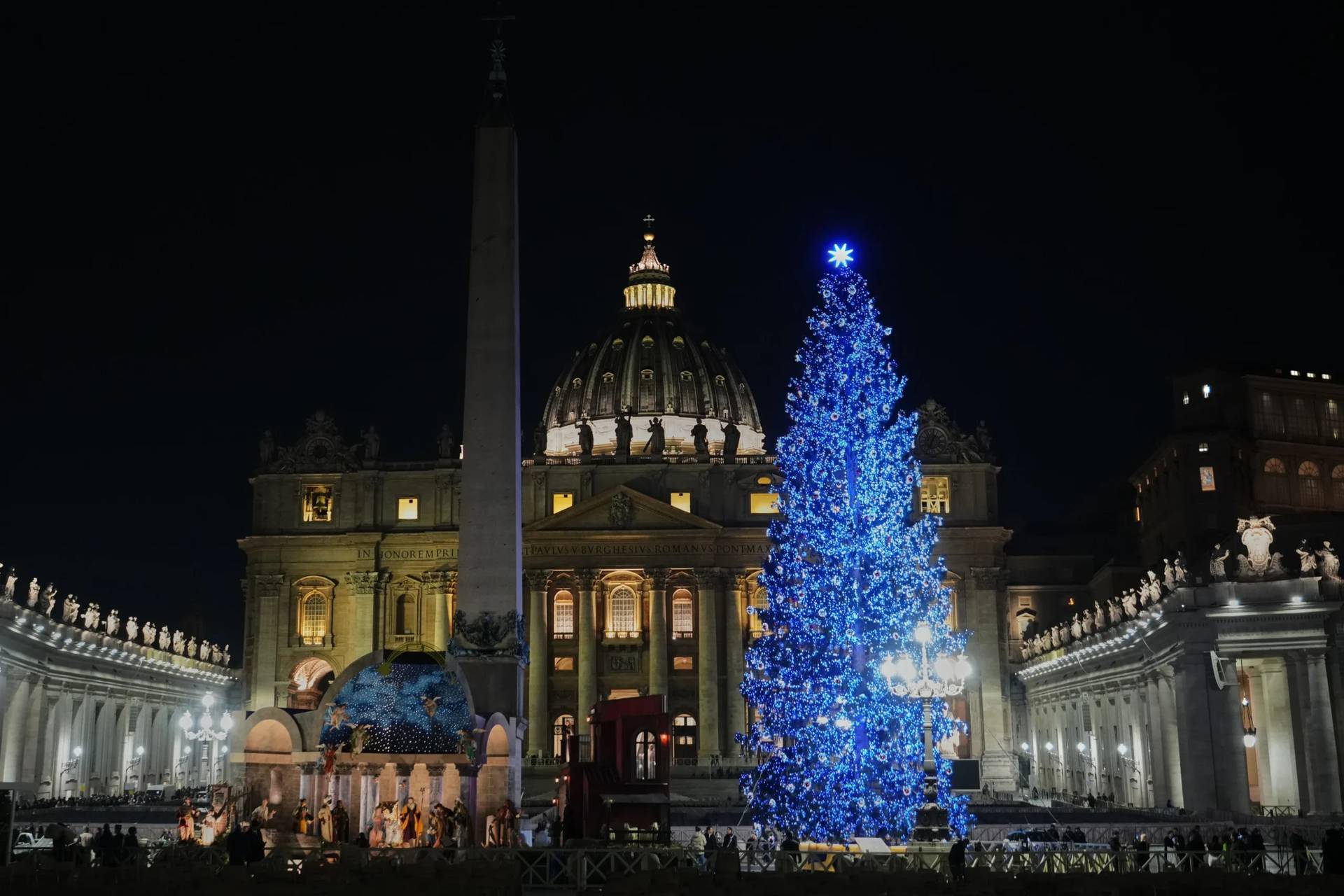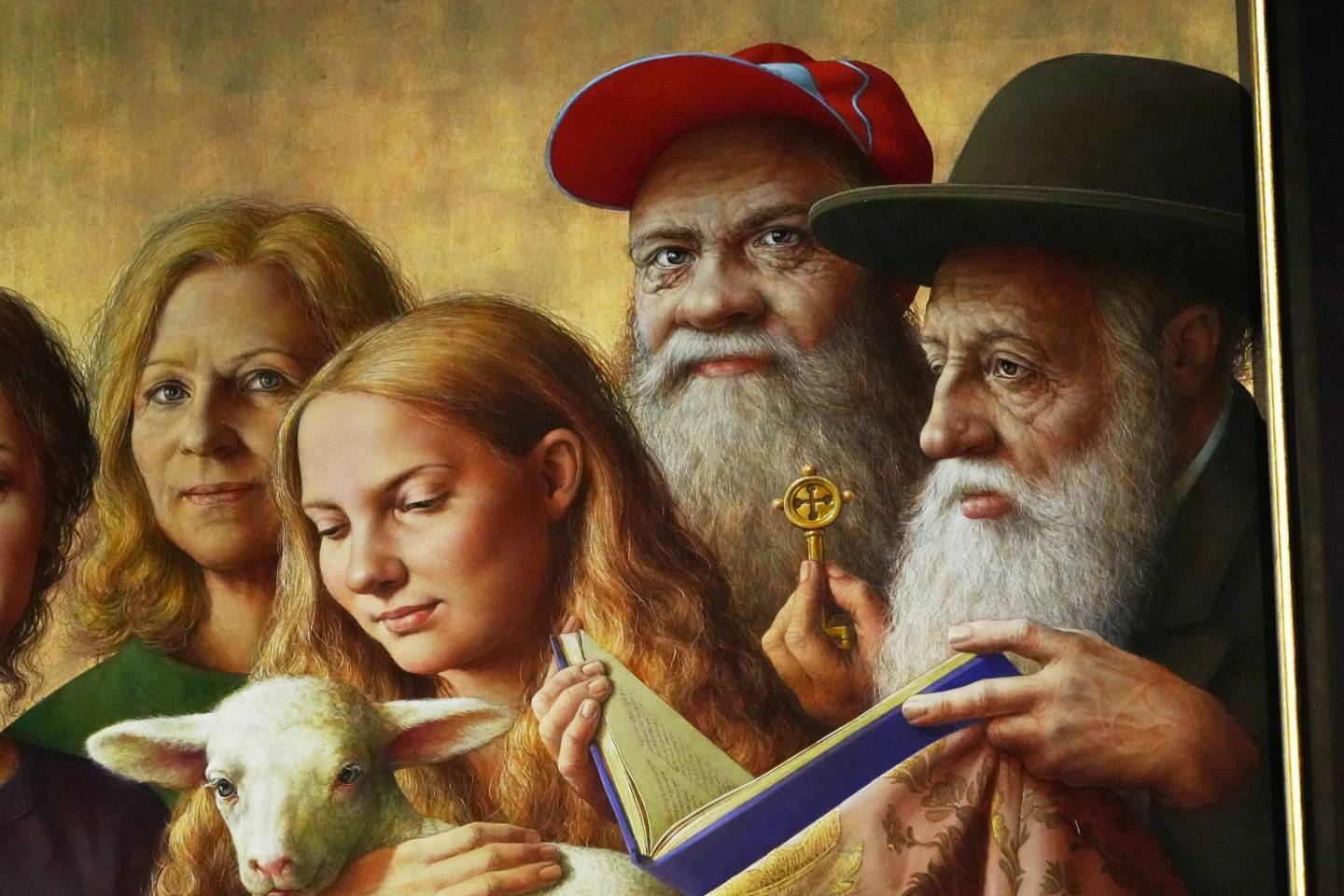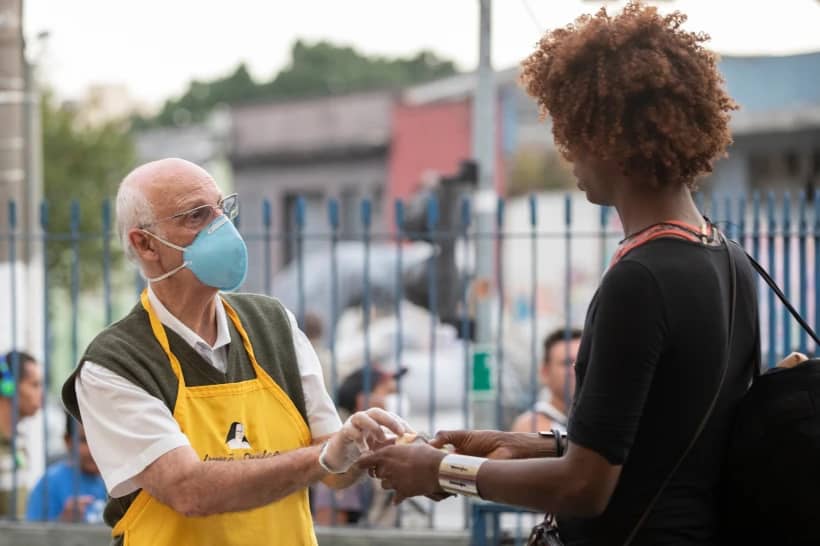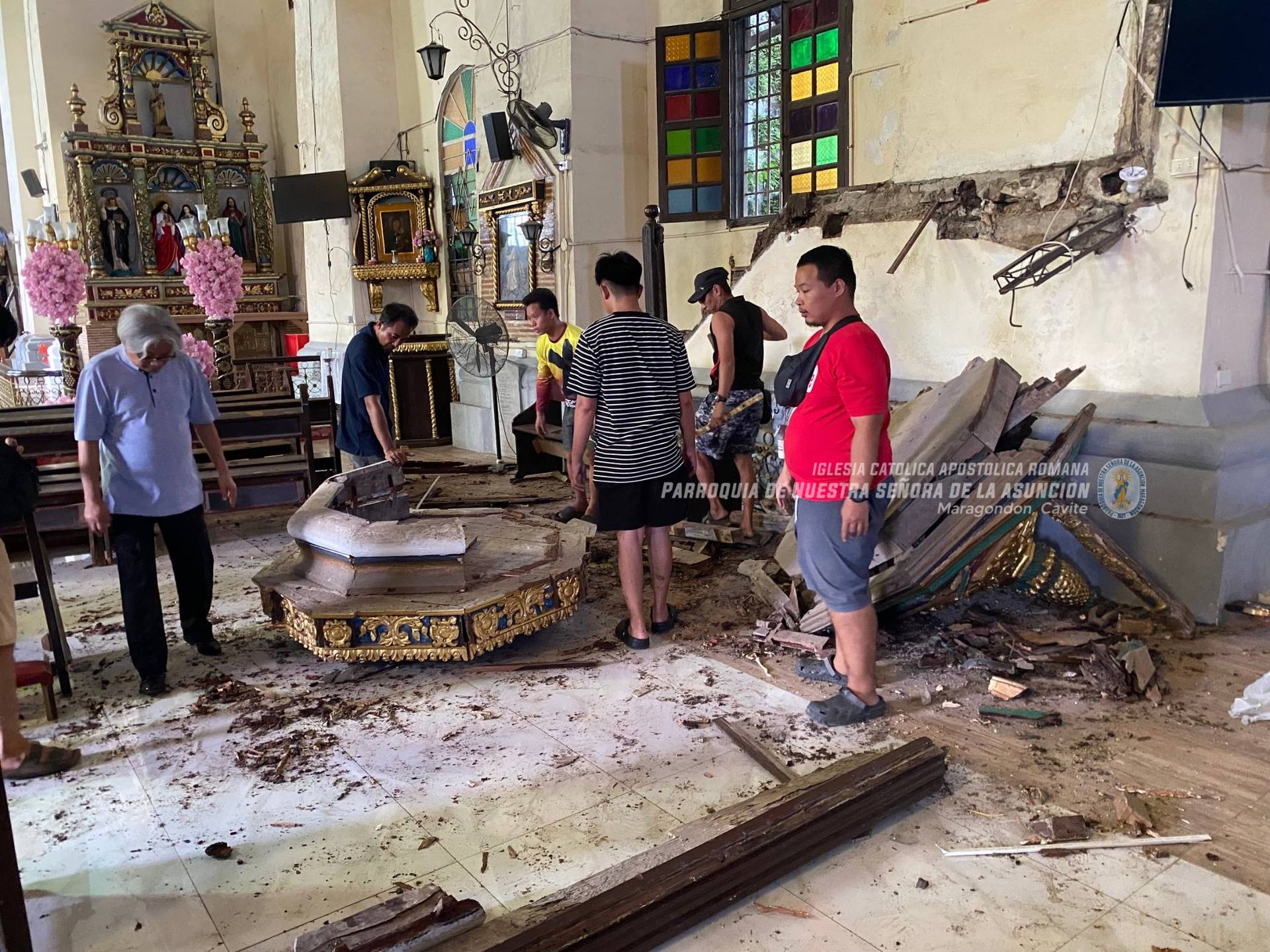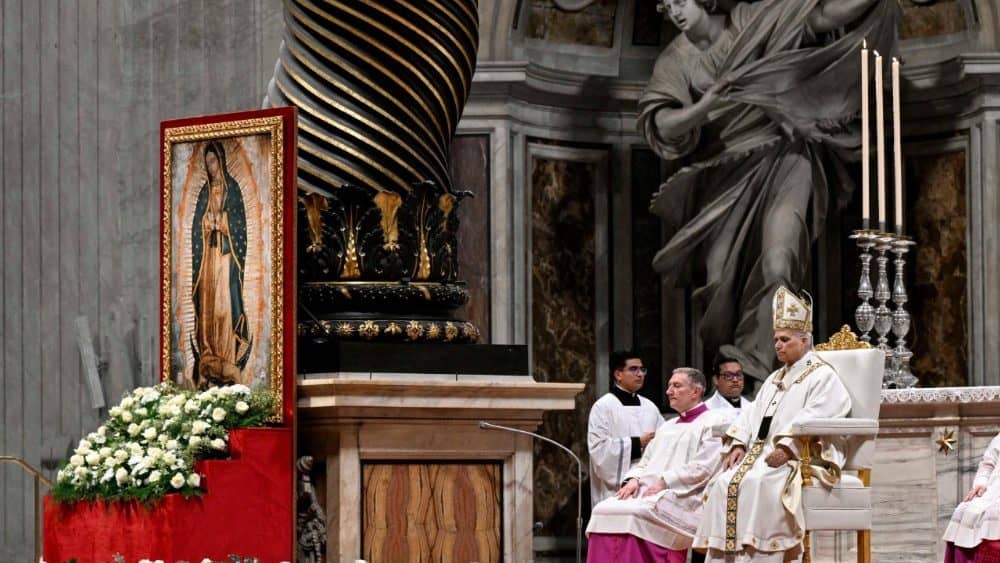ROME – Over the past month the Vatican has continued to make progress wading through its backlog of requests for rulings on alleged Marian apparitions and other spiritual phenomena, approving two new devotions while issuing caution over another.
On July 15, the Vatican’s Dicastery for the Doctrine of the Faith (DDF) published a letter approving apparent revelations about the Trinity to an Italian layman named Gioacchino Genovese.
Genovese, a music teacher and choir director with a wife and two daughters, in 2000 began to experience what he described as “living presence of the mystery of the Holy Trinity” through what he said were “intellectual visions.”
Known as a discreet person who never sought attention or publicity, Genovese began writing down his experiences and reflections on the Trinity, and after five years invited more people get involved in promoting devotion through adoration, novenas and other special prayers.
An initial general examination of his writings and of the alleged phenomena he experienced by the then-bishop of Como, Diego Coletti, Genovese’s parish church was given the status of a sanctuary with the title, Santissima Trinità Misericorida, or “Most Holy Trinity Mercy.”
The DDF in its July 15 letter, signed by the prefect, Argentinian Cardinal Victor Fernandéz and addressed to the current bishop of Como, Cardinal Oscar Cantoni, gave an official nulla osta ruling, essentially a green light, to Genovese’s revelations, but offered clarifications of certain aspects of his writings. Highlighting various positive aspects of Genovese’s works, specifically the relationship between the Trinity and mercy, the letter said that “The Trinity is the source of mercy and its perfect realization.”
“The marginalization of the Trinitarian mystery in the theological reflection and spirituality of past centuries is well known. In this sense, Mr. Genovese’s spiritual experience is in line with the rediscovery of the centrality of the Most Holy Trinity for the faith and Christian life that occurred in the last century,” the letter said.
It said the truth of the nature of the Trinity is “expressed insistently” in Genovese’s writings, and that “the Church is called to rediscover more and more in the gestures of Christ that infinite mercy of the Triune God, who in the writings of Mr. Genovese is called by the name ‘Trinity Mercy’. This is the center of all the messages because, ultimately, it is the center of Revelation.”
However, the letter also offered some clarifications, specifically in Genovese’s occasional use of the plural “we” to describe the incarnation of Jesus.
“Such expressions are not acceptable and their diffusion must be avoided, as they can easily be interpreted in a way contrary to the Catholic faith since only the Son became incarnate,” the letter said, but insisted that this is not an error in Genovese’s writings, as in subsequent texts “we find clarifications that lead us towards the correct interpretation.”
The letter also acknowledged the difficulty even for trained theologians to be precise in their language describing complex spiritual concepts such as the Trinity, saying the portions of text requiring clarification in Genovese’s writings are not so much errors as a lack of precise terminology.
At the beginning of this month the Vatican also issued two more rulings, offering a clear word of caution on devotion surrounding a Puerto Rican laywoman named Elenita de Jesús, and approving devotion at the popular Marian shrine of Our Lady of Good Health in Vailankanni, India.
A Puerto Rican missionary and catechist who lived in the late 1800s to early 1900s, de Jesús established the Marian Sanctuary of the Holy Mountain in the southern diocese of Caguas, and was known for promoting Marian spirituality and devotion, and for her work with the poor.
In an Aug. 1 letter addressed to Bishop Eusebio Ramos Morales of Caguas, Fernandéz clarified that while the Marian spirituality and devotion de Jesús spread was legitimate, the belief among some that she was the Virgin Mary are false.
“It cannot be denied that the figure of Elenita de Jesús is of great value for the Church in Puerto Rico and should be considered as a stimulus to total dedication to the Kingdom of God,” Fernandéz said in the letter.
However, he also cautioned that those devoted to her must see her “as a motivation to give themselves to God alone and avoid directing toward her the gestures of devotion that correspond to the Mother of Jesus Christ. It is better not to damage this treasure by distorting its original meaning.”
To this end, Fernandéz gave a firm constat de non supernaturalitate, or “not supernatural” ruling, to the belief that de Jesús was the Virgin Mary.
“Any identification of Elenita with Our Lord Jesus Christ, the only Redeemer, or with the Virgin Mary, first cooperator in the work of her Son, must be totally avoided,” he said, saying, “Elenita de Jesús is not the Virgin Mary.”
De Jesús was, however, a holy woman who “lived under the influence of the Holy Spirit, in charity and in proclaiming the Gospel, inspired by a deep love for our Heavenly Mother, the Virgin Mary,” the letter said, saying de Jesús’s life “speaks to us of love for Jesus Christ and Mary, of the dignity of women, of generous dedication, commitment, austerity,” and of the care and defense of the poor.
On Aug. 1 the DDF also published a letter to Bishop-elect Sagayaraj Thamburaj of Tanjore Diocese in India issuing a nulla osta to devotion at the Vailankanni Marian shrine, which is Asia’s biggest Marian shrine and is visited by millions of pilgrims annually.
Tradition holds that apparitions of the Virgin Mary in Vailankanni date to the 16th century, when Mary allegedly appeared to a man carrying milk to a customer, asking the man to give the milk to the child she was holding.
The man agreed and gave her the milk, but discovered upon reaching his customer that the milk was still in the jar.
A shrine to Our Lady of Health was later established in Vailankanni and on Sept. 8, large crowds are expected to come for the celebration of the feast of Our Lady of Health.
In their letter, signed by Fernandéz, the DDF noted that the shrine has also become a popular destination for non-Christians who seek spiritual graces.
“The many spiritual fruits that are produced at this Shrine make us recognize the constant action of the Holy Spirit in this place,” the letter said, noting that many non-Christian pilgrims who come obtain special graces and even what they believe are miracles.
“Some of them are healed of their illnesses and many find peace and hope. Without doubt, the Holy Spirit is also at work in them, responding by Mary’s intercession,” the letter said, saying the interreligious presence at the shrine “should not be considered as a form of syncretism or mixing of religions.”
“The Sanctuary is a place where the closeness of Mary, who welcomes everyone and demonstrates the love of the Lord to those who reflect on it, is manifested. Those who cannot receive the sacraments of the Catholic Church are not denied the consolation of the Mother of Jesus,” the letter said.
Fernandéz in the letter said Pope Francis has a special affiliation for popular piety and for the Vailankanni shrine, and that for this reason, he has offered a special blessing to all pilgrims who will attend the Sept. 8 celebrations there.
He recalled that Pope John Paul II in 2002 chose the shrine for the church’s celebration of the World Day of the Sick, saying, “the same Virgin Mary who manifested herself at Lourdes also manifested herself in India as the Mother of Health.”
“It is not merely a matter of bodily health…but also one that touches the soul,” Fernandéz said, saying, “Contemplating the image of Mary we can all recognize the love of Jesus Christ that can heal our sadness, our anguish and our fears.”
“If we pause before Mary, even in a brief moment of faith and love, her maternal gaze restores peace to us,” he said.
Follow Elise Ann Allen on X: @eliseannallen









